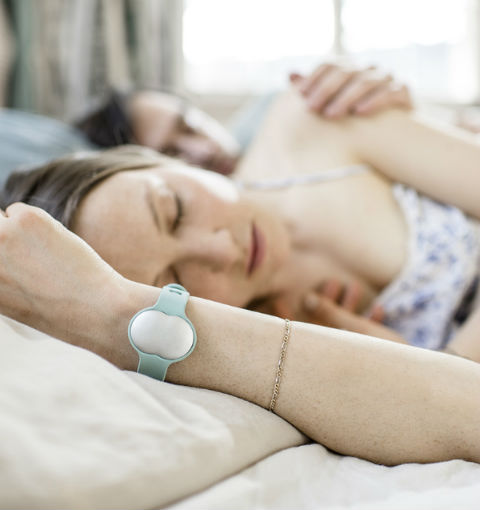Mobile Medical Application Development in 2016 – an insider’s perspective
Within the last 24 months, mobile health technologies (eHealth apps) have radically changed the way we think about health and medical devices. The combination of smart apps and wearable sensors has brought monitoring and diagnostic power into the hands of the patient, increasing value and utility, often to a very competitive price. There is a surge for patient-centric offerings across the industry, truly leveraged by the new mobile health technologies.
Ava Women is one of the companies that has moved quickly in the right direction and with the product “Ava”,an advanced fertility tracking bracelet, they assist women and couples in narrowing down the right timing of a successful conception.

We were lucky to get a word with Mr. Philip Tholen, Co-founder and VP of Operations of Ava Women, and took the chance to ask some questions about the opportunities and challenges that face a "wearables"-company.
Mr. Tholen, we have seen a host of consumer electronics companies, including Apple, Microsoft, and Google, with little or no experience in medical device development, trying to penetrate the market with wearable technologies, banking on their expertise in consumer products.
There are also more traditional companies such as Medtronic, with substantial experience in medical device development that are now jumping the bandwagon, attempting to entering this new playing field.
Looking at the two extreme ends of this spectrum, where would you say the Ava story fits in?
I would say we are positioned right between these two extremes. On one hand, we have a Class I regulated medical device with all its pros and cons. This demands for compliance with GMP, FDA Class I, taking IEC 62304 into consideration, etc. On the other hand, we focus on selling directly to the end-user. In that sense, we have to market our medical device as if it was a consumer product. Striking this balance is not always easy.
With numerous players grabbing for their share, I assume that speed is of the essence in the mobile health market and time-to-market is critical. What measures has Ava taken to make sure that the development proceeds as fast as possible?
Exactly. Our market operates as fast-paced and as short-cycled as a classical consumer market. But in the background, we still have to assure compliance and organize our company in the classical medical device way. Guess how long the lights are on in the Ava-atelier each night!
In order to be fast, we massively parallelized all process steps right from the start. For example, we started hardware development even before we had the clinical study results which delivered the data we need and which confirmed that the sensor concept we chose works. We made so many educated guesses! But luckily, it always worked out and we never had to go back to the drawing board due to inaccurate assumptions.
Furthermore, we purposely selected “off-the-shelf” hardware technologies and components. We neither had our suppliers develop or modify components specifically for our purpose nor did we trust in suppliers’ statements such as “we will have this new product ready when you are going into production”. Only what’s already been commercially available in the mass market made it to our product concept shortlist. We could effectively eliminate the risk of supply-related delays using this approach.

Developing a working medical device is a formidable task per se. Doing it in the strictly regulated environment of medical devices is usually not making it easier. How has Ava, as a start-up company, managed to tackle the regulatory challenges of the medical device market?
Since the beginning we kept an eye on regulatory aspects of product development: for example, we have always made sure that candidates have experience in this field when we selected key team members. Furthermore, during the hardware supplier selection process we only considered ISO 13485 certified companies. On top of that, we have hired a highly experienced professional who is busy refining our QMS and accelerate us through an ISO 13485 certification in due time before market launch. All of these steps might be expensive and seem much work for a startup, but they are part of our strategy to become a cutting-edge digital health company providing state-of-the-art technologies for the end-user as well as for medical professionals.
There has been much debate lately about cybersecurity and data integrity when it comes to mobile health applications. Even FDA has concerns about how patient data is stored, transferred, and accessed. How has Ava addressed these questions?
We are taking the FDA guidance on cybersecurity very seriously. Confidentiality and data integrity is paramount for us, as is the trust our customers have in our product. All data in our application is stored, handle, and transmitted with utmost vigilance. Our security concept is being challenged and improved periodically, and it will also be audited by independent third parties. However, making sure that security measures do not impair the usability of our device shall not be neglected. Luckily, I am confident to say that we have the right team in place to cope with these challenges.
Finally, based on your experience with Ava, do you have any advice to other start-ups currently thinking about embarking on a similar journey?
Do not underestimate the commercialization process of a medical device! Having a working prototype is a good start, but there are many other pieces that have to be put in place before you can place the product on the market. Having the right team and the right partners will certainly make that part of the journey less rough.
AVA Women uses Aligned Elements to manage their medical device development documentation.
Learn more about how Aligned Elements can help with achieving regulatory compliance for your app